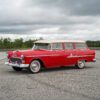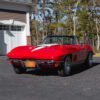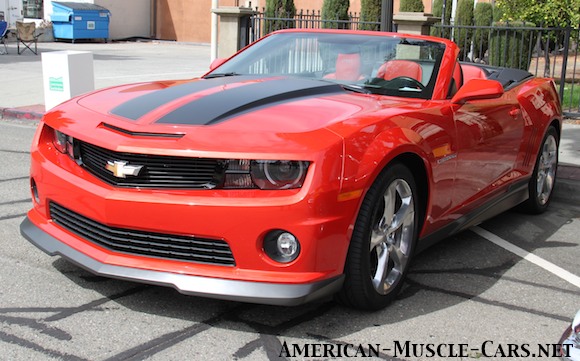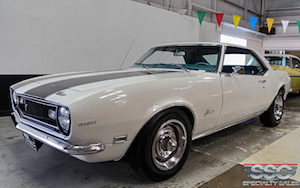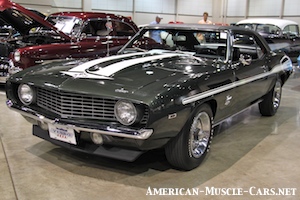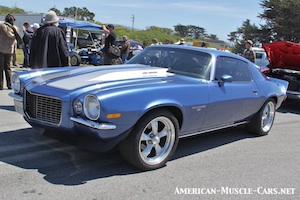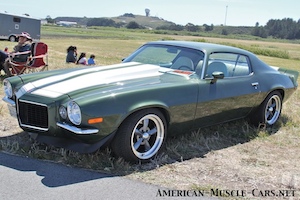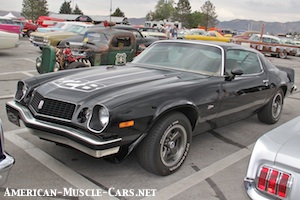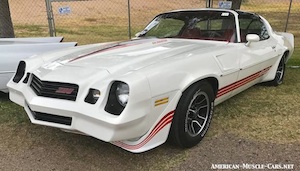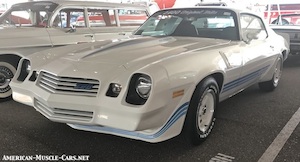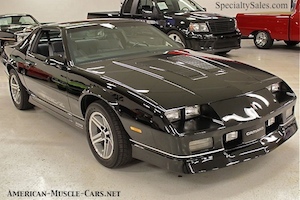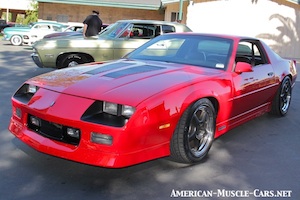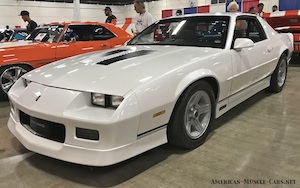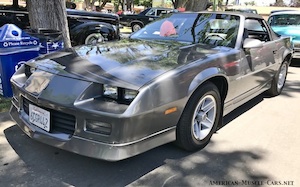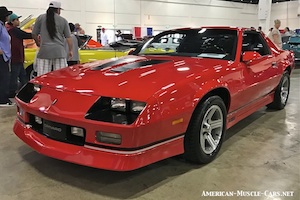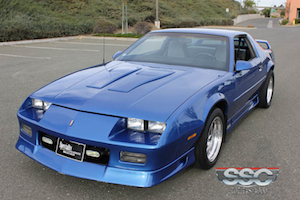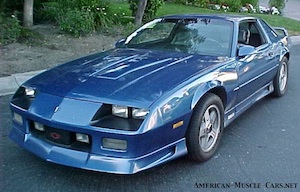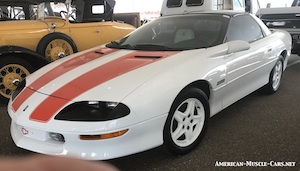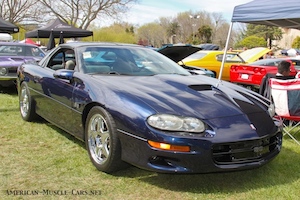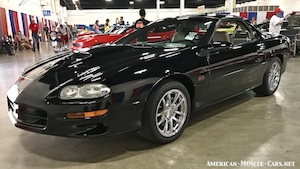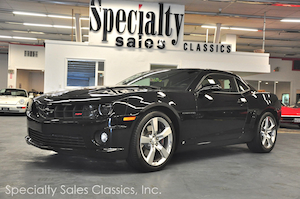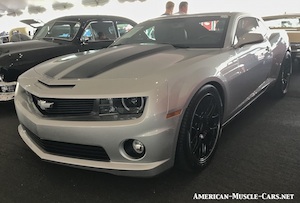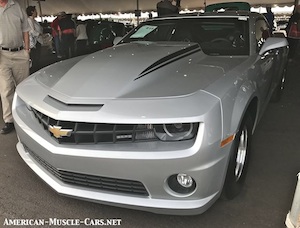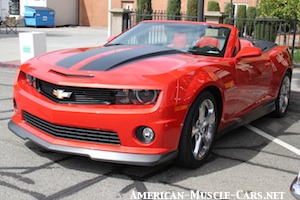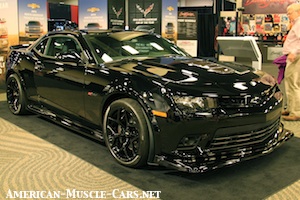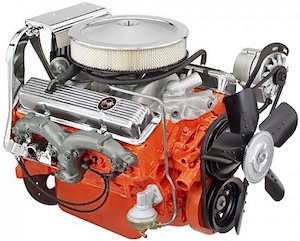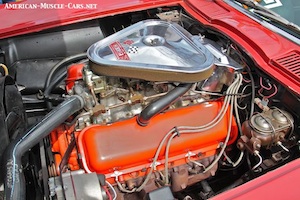Chevy Camaro
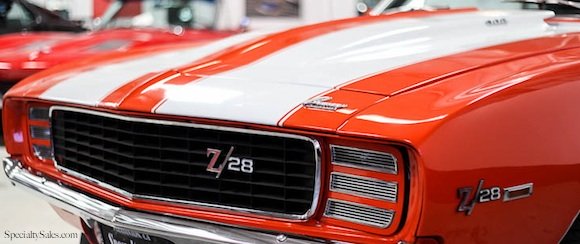
CHEVY CAMARO LATE TO THE PONY CAR PARTY When Ford took a lowly Falcon and slapped a new body on it in 1964, they created a sensation in the new Ford Mustang. The rest of the auto industry was caught flat-footed. No doubt market analysts had predicted the “youth market”, the first wave of postwar Baby Boomers who were just reaching car-buying age in the early 1960s. For the first time in history, young people were not only a huge demographic bulge, they were the first such generation to have some money in their pockets. General Motors, Chrysler and even American Motors scrambled to put a car together that could take a nice bite out of this lucrative new pie. It took GM 3 full years to answer Ford’s shot, and they fired back with both barrels: the 1967 Chevrolet Camaro and its sister car, the 1967 Pontiac Firebird. Although very similar, they were surprisingly different. Back in the day, each GM Division even had their own line of proprietary engines, and their designers and engineers went to great lengths to differentiate cars that were essentially the same underneath. Regardless, when the Chevy Camaro came out, it was an instant hit and soon a plethora of option packages and upgraded models emerged. You could get a Chevrolet Camaro RS, or a Camaro SS, or even a Camaro SS/RS, or you could get a Z-28, and get any of them in either a coupe or convertible.
5 Generations of Chevy Camaros: VISUAL COMPARISON
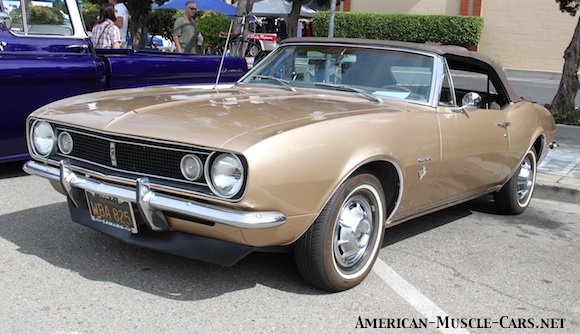
1st-GEN CHEVY CAMARO, 1967-1969
ABOVE: 1967 Camaro Convertible.
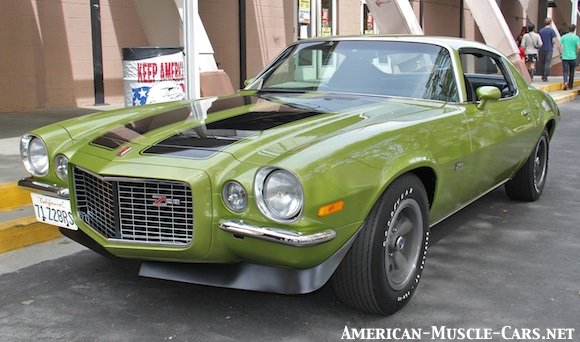
2nd-GEN CHEVY CAMARO, 1970-1981
ABOVE: 1972 Camaro Z/28.

3rd-GEN CHEVY CAMARO, 1982-1992
ABOVE: 1991 Camaro Z/28
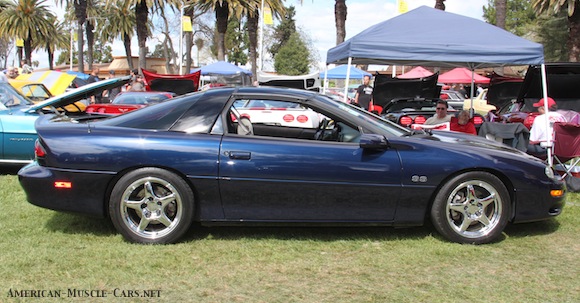
4th-GEN CHEVY CAMARO, 1993-2002
ABOVE: 2000 Camaro SS
5th-GEN CAMARO, 2010+
ABOVE: 2013 Camaro SS Convertible.
5 Generations of Chevy Camaros: THE DETAILS
1st-generation CHEVY CAMARO, 1967-1969
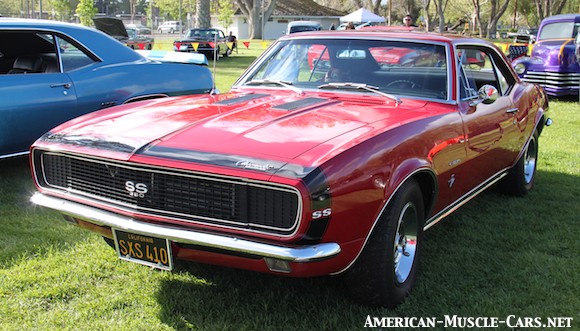
ABOVE: 1967 Camaro SS Coupe, the first GM car ever to use the new 350 small block V8. Note the California black platea.
CHEVY CAMARO – THE FIRST GENERATION: 1967-1969
The 1967 Camaro was a great car starting out. Chevy’s engineers put great thought into how it would handle, and right out of the box, Camaros were available with a host of high-performance engines superior to the Mustang’s in terms of power. The 1967s and 1968s look very similar, but can be easily differentiated by a couple of telltale features. The ’67 Camaros had wind wings (the little triangular side windows on the front of the doors), and the 1968 did not, they had one solid side window. Also, the 1967s had round parking lights in the grille, where the 1968s had oblong lights. Of course, there are countless differences large and small, but this makes Camaro-spotting much easier. After 2 dynamite years, Chevrolet completely reskinned the Camaro for the 1969 model year, giving it a whole new look. It’s clearly on the same bones, but has a tighter, cleaner, more modern look, and is, to this day, the most desirable and sought after year of classic Camaro of all times. It took so long to tool up for the big changes coming with the second-generation that they ran the 1969 production year long, so long that some of the later ones were actually built in very late 1969 (normally when 1970s would be built) or early 1970. While most people still call them all 1969 Camaros, some insist that the latest ones were technically 1970s. And we still have a remnant of this thinking in the way refer to the first year second-generation Camaros as 1970-1/2 Camaros.
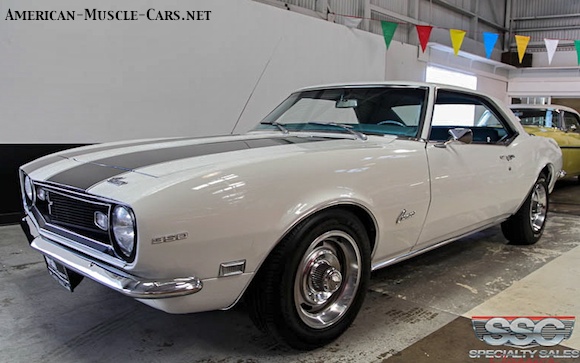
ABOVE: 1968 Camaro coupe. Here are some visual cues to tell them apart from the ’67 Camaro: The ’68 has side marker lights & the ’67 does not; the front turn signals on the ’68 are more rectangular while the ’67s are round; and the most famous and easiest-to-spot difference is the front vent windows. The ’67 has them and the ’68 does not. The ’68 has a larger one-piece side window, eliminating the vent window. This necessitated a flow-through ventilation system which GM dubbed Astro-Ventilation.

2nd-generation CHEVY CAMARO, 1970-1981
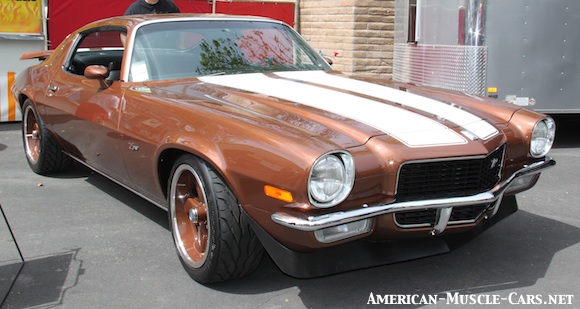
ABOVE: 1970 Camaro Z28 with stripe, optional front spoiler, and stock wheels. They only looked like this for 4 models years, 1970 through 1973. Then increasingly stringent safety regs forced big bumpers to replace the delicate and shapely front end. Same for the back.

1977 was the last year for the exposed metal bumpers. By 1978 (below) the bumpers disappeared under one-piece plastic nose cones.

ABOVE: 1979 Camaro Z28. Big, heavy cars with big, heavy doors.
CHEVY CAMARO – THE SECOND GENERATION: 1970-1981
The new-for-1970 Camaro was an all new car, designed practically from a clean sheet. The body style was long and sleek, and clearly influenced by European design at the time. Most of the engines were carried over from the First Generation. The top engine was the 350 LT1 with 370 hp. The new fastback bodywork made a convertible impossible. Another thing that went away were the hideaway headlights on the RS (Rally Sport) models, replaced by a completely new and unique-to-the-RS nose cone with a larger grille opening and the famous ‘split bumpers’, 2 small bumperettes, one on each front corner, instead of a full-width bumper like all the other Camaros, and the effect was drop-dead gorgeous! One of my personal favorites. But just as the 1970 Camaro was cutting its teeth, the American Muscle Car wars were winding down, and each year from then on, horsepower would be reduced. It got so bad by 1975 that Chevrolet was too embarrassed to shame the hallowed Z28 name by placing it on such gutless smog-dogs that there were no Z28s built in 1975. The Chevy Camaro went the way of all the other muscle cars of the day, turning instead toward the ‘personal luxury’ segment of the market, donning more comfort and convenience features. But the stripes and spoilers just got wilder and wilder. T-Tops arrived in 1978. The Z28 had reappeared in 1976 after a one-year hiatus, and performance had been slowly creeping up again, but it would not surpass it’s 1970 peak until 1993 and the introduction of the 4th-generation Chevy Camaro Z28. By the time the Second Generation ended in 1981, it had covered 12 model years (a very long time in the car biz), and the target had moved considerably since its inception in 1970, when gas was cheap and still had lead in it. The new Camaro would have to be lighter and more fuel efficient, but it would also have to be faster.
3rd-generation CHEVY CAMARO, 1982-1992
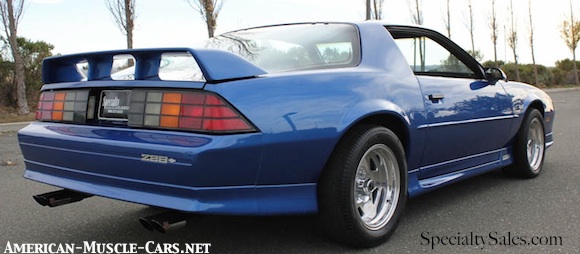
A NEW LIGHTER CHEVY CAMARO
The goal of the 3rd-gen Camaro and Firebird was to get the size and the weight down. Both were accomplished handily. While it was smaller by almost every dimension, the interior was actually roomier than in the 2nd-gen cars. The Camaro Convertible would finally make a reappearance in 1987, after missing the entire 2nd-generation. The Z28 roared right through the 3rd-gen, getting faster and faster. The IROC-Z (commemorating, and licensed by the International Race of Champions, which used identical Camaros) started as an option package on the Camaro Z28 in 1985 until 1988 when it replaced the Z28. Chevy lost the rights to the IROC name (it went to Chrysler for a little Dodge FWD coupe), so the Z28 name was back for the last two years of the 3rd-generation, 1991 & 1992. 3rd-generation Camaros are often referred to as “square-body Camaros” because of their large flat hood & slab sides. I owned a classic car dealership in the late 90s called Camaro Headquarters & we specialized in 3rd-gen Camaros & Firebirds. We sold 500 of them in 5 years.

CHEVY CAMARO GETS THE TPI V8
TPI stands for Tuned Port Injection, and was GMs first system with a true, fully-electronic, port injection system. It was integrated into a total package of engine monitors and controllers. It provided better fuel economy, stronger performance (up to 245hp for the 5.7, which was Corvette-territory in 1987), and most important cleaner emissions. Starting in 1985, both the Camaro Z28 and the Corvette got the TPI V8. The Vette came standard with a 5.7 liter (350) TPI with aluminum heads. In the Z28, the standard engine still had a 4-barrel carburetor through the 1987 model year. It was replaced in the 1988 Camaro RS and Z28 the 5.0 TBI (Throttle Body Injection) engine, which continued as the base V8 through the rest of the 3rd-generation, ending with the 1992 model year. But the 5.0 TPI V8 became optional on Z28s and IROC-Zs, and made 215hp, which was cooking in 1985. In 1987, a 5.7 TPI V8 became optional on the IROC-Z with 230hp. The G92 option package included rear disk brakes and dual catalytic converters, which raised engine output to 245hp, the same as the Corvette in 1987.

4th-generation CHEVY CAMARO, 1993-2002

ABOVE: 1994 Chevy Camaro Z28. A noble effort, but they just never looked quite right. The way the hood and fender flow into the sideview mirrors, for instance, was an awkward move.
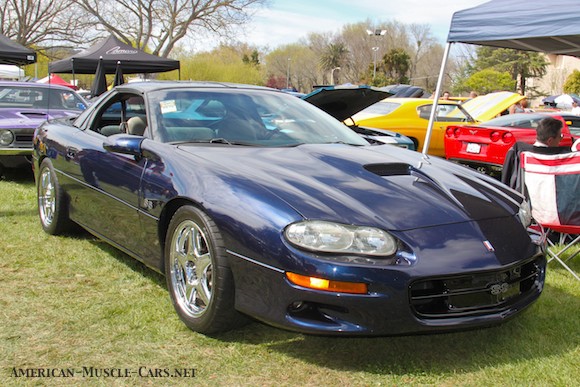
ABOVE: 2000 Chevrolet Camaro SS. Packed with all the best equipment, including 15 more horsepower than the Z28. This illustrates the change that was made to the nose starting in 1998. It didn’t help.
CHEVY CAMARO – THE FOURTH GENERATION: 1993 – 2002
Chevrolet wanted to bring the Camaro into the modern age, and this time, it involved more than just changing up the looks. Of course they did change the looks, drastically, and went too far, in the opinions of many, myself included. It was just way too swoopy, pointy, and space-age aggressive. The pointy nose, gaping grille and squinty headlights never looked quite right, and when they changed it on the 1998 Camaro, it got even worse, some saying it resembled a catfish. But, they were fast, and handled quite well, because the changes weren’t just about looks. For the first time in Camaro history, the powertrains all changed with the new generation. There were no carryover engines. The raspy 3.1 liter V6 was bored out to 3.4 liters and completely reengineered with an entirely new injection system. But the real news was at the other end of the engine lineup, the top end. Where the top-rated engine available in the Second Generation 1992 Camaro Z28 was the 5.7 TPI rated at 245hp (same as the Chevy Corvette in 1992), the 3-Gen Z28s sported a new engine with an old name: LT1, and it made 275hp, and before long, 300hp. Benefitting greatly from the Corvette parts bin, the 4th-Gen Camaro just got faster and faster each year, but it wasn’t enough to create the sales volume needed to make the numbers work. And there were two cars (Chevrolet Camaro and Pontiac Firebird) from two different divisions (Chevy and Pontiac) to add to the sales, and amortize out the costs, but it still wasn’t enough. GM pulled the plug on the F-body twins after the 2002 model year. The Camaro disappeared from the automotive landscape after 35 years on the market, but it was destined to return in 2010 and it’s back with a vengeance!
5th-generation CHEVY CAMARO, 2010-2015
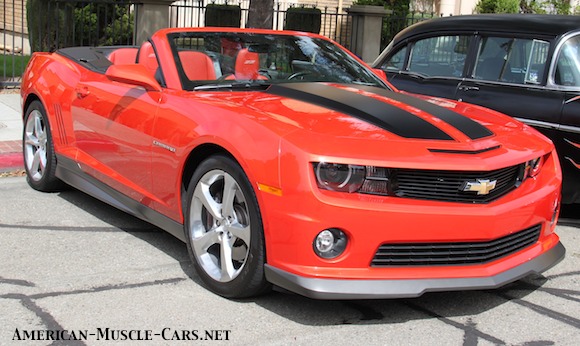
CAMARO IS REBORN IN 2010
2010 was the first year for the hot new 5th-gen Camaro. This is a 2013 Camaro SS Convertible. Depending on transmission, you could get up to 426hp out of a Corvette-derived LS3 V8. The new cars are built on the new Zeta platform, of Australian origin, with 4-wheel independent suspension, including front struts and rear multi-link. These are high-styled cars, some almost feel too much so. But whatever it is, its working, because sales have been very strong. And the performance has grown steadily since its introduction, following closely behind the Corvette. In fact, the 2014 Camaro Z/28 (below) took top honors in the 2014 Best Drivers Car competition, put on by Motor Trend Magazine, ripping through Mazda Raceway Laguna Seca‘s 2.2 mile course in a blistering 1:37.82 minutes. While over 2 seconds slower than the Porsche 911 Turbo S, the Z/28 was deemed the better drivers’ car, easier to drive at the limit, less of a chore to drive fast. Motor Trend called it “Zero to Hero”. Chevy has come a long way with this 5th-gen Camaro. It started out bloated (its still too heavy), not particularly fast, not especially good-handling, but highly-styled…very highly-styled. So high it was hard seeing out. But in 5 short model years, it has evolved into one of the best track cars on the planet, not to mention on badass American Muscle Car.

6th-generation CHEVY CAMARO 2016-?

6th-GEN CHEVY CAMARO KICKS ASS
Built on the lighter Alpha platform, shared with the Cadillac ATS and CTS, drops about 200 pounds off the weight of the previous generation Camaro. The new car utilizes a MacPherson strut front suspension instead of the 5th-gen’s multi-link setup. The new car is not only lighter, its 2.3 inches shorter, 0.8 inches narrower, and 1.1 inches lower. The styling is still overwrought for some, although it’s been cleaned up considerably over the previous generation. But you still can’t see out of its gun-slit windows. A variety of high-performance variants and option packages appeared almost immediately, including Z/28, ZL1 and 1LE.
Chevy Camaro Year-by-Year
GMs bold response to the Ford Mustang, designed to be bigger & better than the Mustang by every measure, the Camaro is an instant hit. Included Coupes, Convertibles, high-performance Z-28s and SSs, RSs, base cars, 6 cylinders & V8s.
Mostly a carry-over from ’67, but with new grille, lights, and a big block in the new-for-’68 Camaro SS396. You could even get aluminum heads! But most ’68s came with 327 V8s.
A total reskin of the 1st-generation Camaro for a whole new, more aggressive look. Indy Pace Car sells 3,676 units. Extra-long production run yields 243,085 sales, best of the 1st-generation.
Chevrolet dealer, Steve Yenko used ‘the back door’ (ie: COPO) to order 100 ’69 Camaros with 427 big blocks & M22s. They were wicked then & now. This one just sold in auction.
First-year of the 2nd-generation. All new, with a sexy new European-inspired shape. Z28 loses DZ302 but gets the awesome 350 LT1. No more hideaway headlights, the RS gets a new snout with Split Bumpers. No more convertibles until 1987.
Mostly carry-over from ’70. High-back bucket seats replace low-backs. Compression & horsepower are down & continuing south.
Again mostly carry-over, with added safety & convenience features.
Last year for this front end, crash regs would mandate a new nose. Horsepower was headed south too.
New 5mph-bumpers change the whole look of the front end. Power is down, but they make up for it with loud, garish stripes.
They were finally getting the look right, and finding ways to add performance. By 70s standards, it wasn’t too bad. Thankfully, the gaudy stripes disappeared.
The final year of the 2nd-generation, the Camaro had grown big & heavy. But still pretty fast.
Performance was coming back. It wasn’t quite here yet, but getting close. 190hp 305 was top engine choice.
New front & rear facias, first year for the IROC-Z package & first year for TPI!
Top engine now has TPI. IROC package available on Z28.
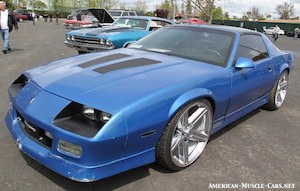
1987 CAMARO IROC-Z
First year for the 5.7 TPI V8, but only with the automatic. AND first year for a Camaro Convertible since 1969!
5.7 TPI is top engine. IROC-Z replaces Z/28 as a stand-alone model.
The ’89 RS came standard with the awful 2.8L V6, with the 5.0 TBI V8 optional. For TPI you needed to order the IROC-Z.
Last year for the IROC-Z, first year for the drivers-side airbag & new dash. Low volume year, not many Camaros made & only a very few IROCs.
A facelift for the aging 3rd-gen Camaro gives it a new look & new life. Mostly carryover, mechanically. IROC-Z is gone, replaced by the Z28 nameplate, just as fast as before. 16″ IROC rims are gone also, replaced by a handsome new 16″ 5-spoke 25th-Anniversary Wheel (coming in ’92).
1992 CAMARO
1992 marked the 24th Anniversary for the Chevy Camaro, and all 1992’s were 25th Anniversary Editions. However, there was also an actual “Heritage Edition”. Last year for the 3rd-gen.
The 4th-gen Camaro never matched the sales of the previous 3 generations. New front look started in ’98, few changes since then. The SS had 320hp to the Z28’s 305hp.
Last year for the 4th-gen Camaro. But it went out with a bang. The SS was wicked-fast for the day. Then, our Camaro was gone…at least for awhile.
First year of the 5th-generation. The Camaro is back!! The SS is the only V8 version, and its red-hot with Corvette power, 4-wheel independent suspension, and loads of style.
Came with a 426-horse 6.2L V8 & would scorch through the 1/4-mile in just over 13-seconds.
Chevy built just 69 COPOs in 2012, it’s introductory year, to commemorate the 69 COPO Camaro ZL1s built in 1969. This is a modern day factory drag car.
2013 CHEVY CAMARO SS CONVERTIBLE
Super Sport package in a convertible, it doesn’t get much better than that. See all the pictures.
The Z/28 is back with a vengeance! Built with one goal in mind: The Track! This street legal race car comes with a hand-built 7 liter (427ci) LT7 small block V8.
The hottest production Camaro yet! 580hp & 556 lb/ft from a supercharged 6.2 V8. WOW!.
The might Mouse Motor from humble beginnings in 1955 through the end of Gen I in 2003. Pictures, Specs, History & more.
The all-powerful Rat Motor is examined through all 5 generations or ‘Marks’, from 1958-present. Pictures, Specs, History & more.


